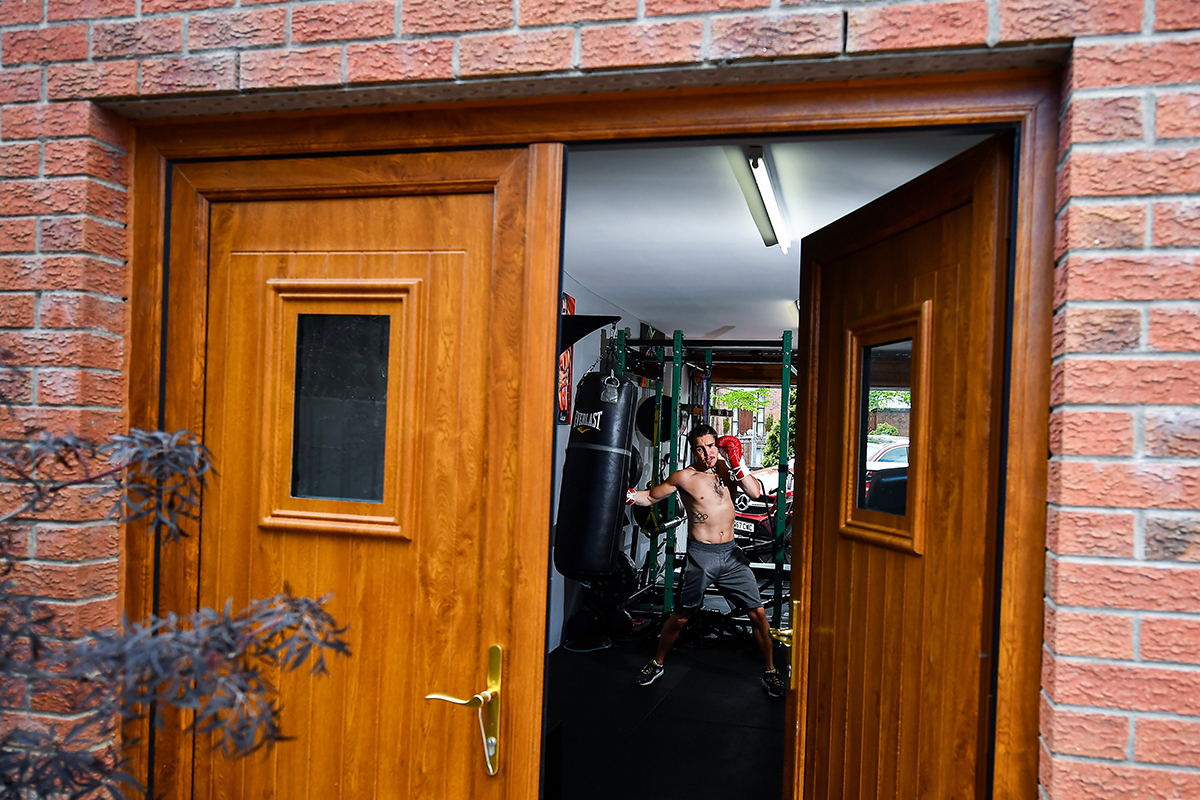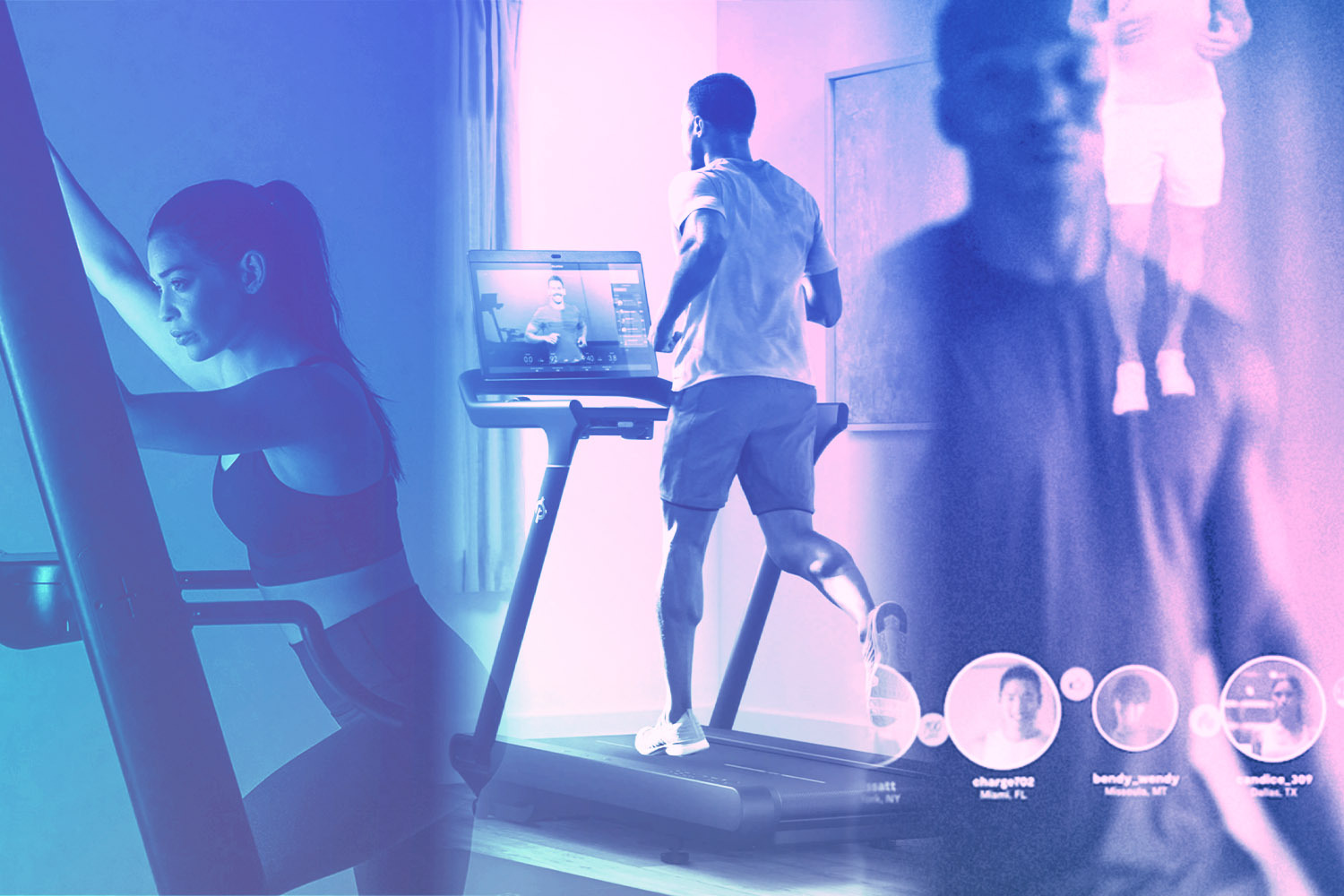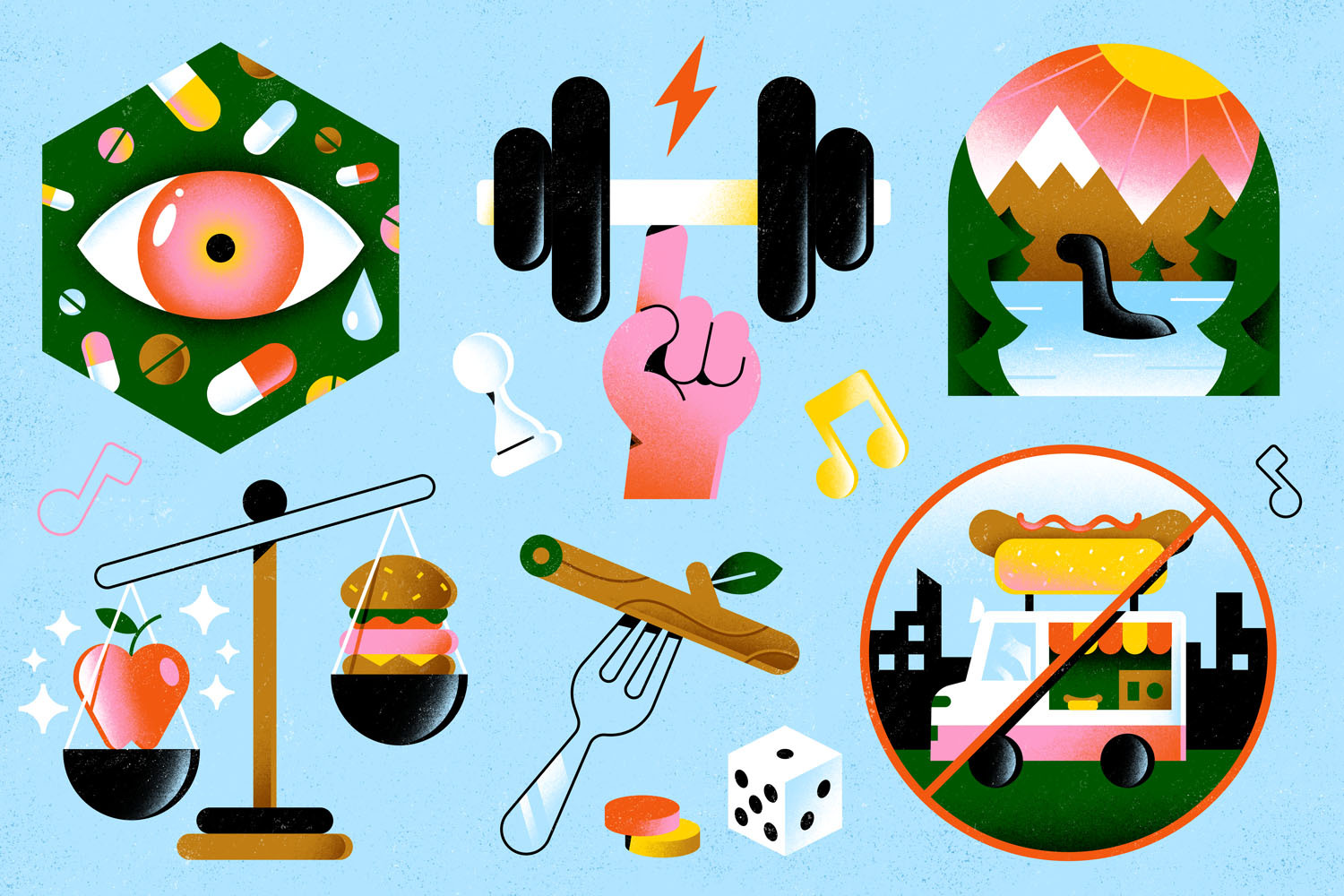My gym shut its doors the other day after another COVID outbreak.
It’s closed for the rest of the year, and based on the latest Omicron numbers, I wouldn’t be surprised if it doesn’t reopen until mid-January. Obviously, there are far worse plights than not being able to go lift weights for 45 minutes, but the development still stings. There’s a bit of PTSD at play. It brings me back to this time last year, when we were deep in the throes of quarantine, and all the usual outlets — gym, office, bar — were still closed or unthinkable.
December’s unwanted reversion aside, though, this was a worthwhile year for personal fitness. While 2020 forced us into sudden DIY workouts (lots of desk-side pushups and online fights for dumbbell sets), 2021 saw us ease into wellness’s new and chaotic world order.
For many Americans, it was nearly a full year of WFH, capped by a sneak peak in Q4 at what would appear to be the permanent future of the workplace: some sort of hybrid, on-off schedule, which should continue to afford employees a degree of flexibility as they plot their workouts for the week.
Those workouts varied throughout the year. Gyms reopened; road races returned; Pelotons finally arrived; viral challenges got people off the couch. We’re not veterans yet — and how could we be, when another sinister letter of the Greek alphabet likely lies in wait for 2022? — but we also don’t have to be. While fitness thrives on routine, it can also benefit from unforeseen shake-ups and shocks to the system. These last 12 months were full of those.
In order to make sense of all the efforts we put in this year, we’re putting some of 2021’s top trends under the microscope. From TikTok to midday naps to whether ClassPass still exists, here’s how the world of fitness evolved over the last 365 days.
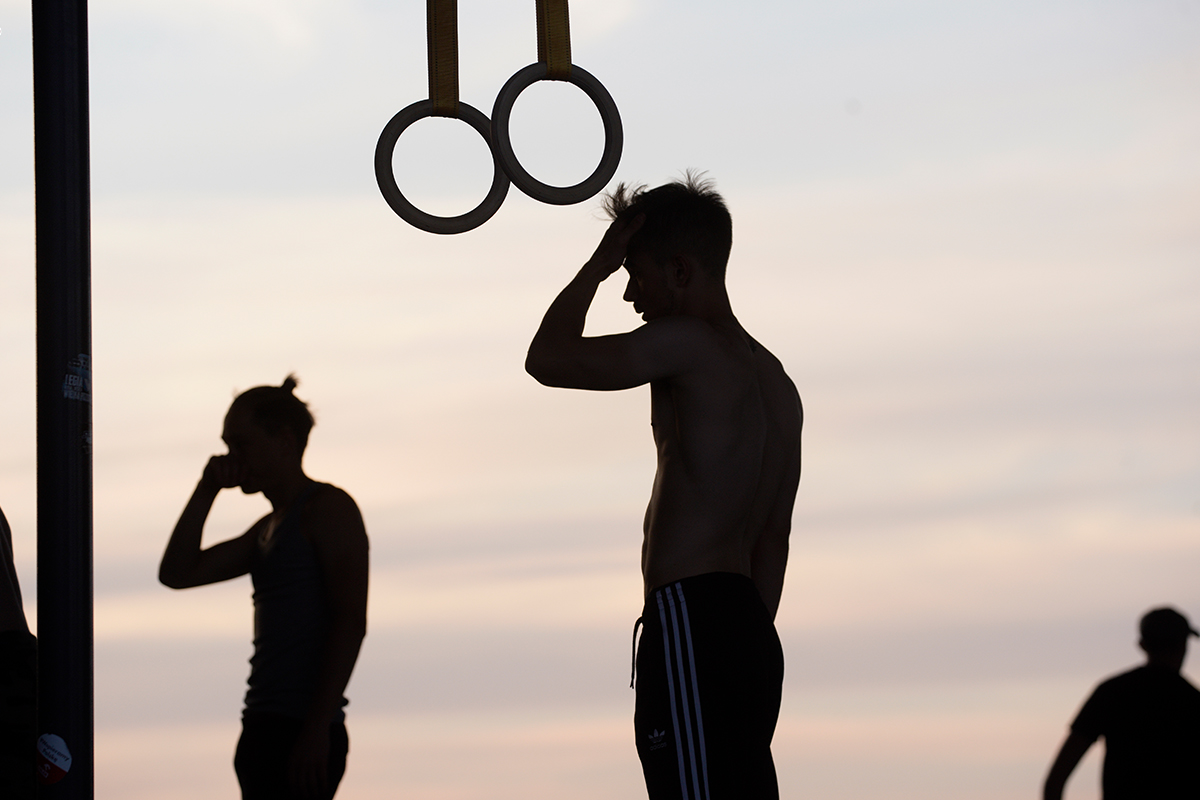
Gyms came back, sort of
A piece published by The Guardian early this year talked about the gym’s role as “third place”: when there isn’t a global pandemic on, it’s an instrumental institution in the lives of urbanites. And “it” doesn’t necessarily refer to a single physical health club; as we profiled mere weeks before COVID made landfall in the States, New York’s Flatiron neighborhood had morphed into a de facto “Fitness District,” where twenty- and thirty-somethings bopped around with the help of ClassPass passports, sampling boxing bootcamps, hot yoga studios and spin classes as they saw fit.
While ClassPass is still with us (their default plan is now $79 a month), the cornucopia of fitness options isn’t as full as it once was, and you’d be hard-pressed to find COVID-conscious adults who set out to visit as many gyms as possible in 2021. Heading into the year, 17% of the country’s health clubs had closed permanently. Those that managed to hang on did so thanks to a patchwork of measures: safety protocols (mask-wearing, midday sanitation closures, expensive filters), increased monthly rates and in some cases, a commitment to virtual offerings such as Zoom classes.
It’s a testament to the commitment of gym-goers — or perhaps just their desperation to leave their homes — that even with all that red tape, people jumped at the opportunity to return to the gym this year. According to data from this past October, gym visits were only down 8% when compared to figures from October 2019. Even the bigger chains, which have had trouble wooing back members (more so in the cities than the suburbs), have started to see a turnaround. As of early November, Planet Fitness reported that membership was at 97% of pre-pandemic levels.
Where do we go from here? Well, for starters, we’ll need gyms to open back up again in 2022. (Don’t be surprised if you run into some capacity limits for a couple weeks.) Some newer gyms even keep a live ticker of how many people are in the gym, so members can make an informed decision on whether they should stop by. Once we’re back to normal-ish, though, expect adults — especially Millennials and Gen Z — to bring a similar “hybrid” model to the week’s workouts as they’ve grown accustomed to with the work week. The younger generations love spending money on fitness and love convenience. It’s easy to imagine a future where they double up on gym memberships and home workouts, picking and choosing from their own “fitness buffet.”
A $2,000 laundry rack?
Those home workouts might be growing a little stale, though. Peloton finds itself the main character on Twitter all the time (that’s not a good thing), but shove all the pop culture controversies to the side and you have a product that consumers appear to be losing interest in. At the brand’s peak of popularity — which we could reasonably pinpoint to about 14 months ago — its bike was nearly impossible to get. Units ordered last fall were backordered into spring of this year. At the time, commenting on the entire “connected fitness” craze, I wrote: “It could be a while before you sweat in public again. This is a world you need to know.”
That was genuinely how it felt at the time, and in some ways, those words still ring true. This year, Peloton-types named CLMBR, Ergatta, Tonal and Tempo raised hundreds of millions of dollars from teams of tech titans, rockstars and tennis legends. The platforms, which tend to package their apparatuses around one activity (cycling, rowing, climbing) but simultaneously offer an entire library of strength training, yoga or meditation classes, are banking on at-home workouts staying in vogue forever. Whether that’s fueled by a sense of comfort or hysteria doesn’t really matter. As long as people keep paying their monthly subscriptions (which generally run users somewhere on the order of $39.99) and sharing their workouts on social, the trend will rage on.
But mighty Peloton has faltered this year, and diagnosing exactly why that’s happened could send ripples throughout funding series in 2022. One emerging theory? People are simply getting bored of their bikes. Resale marketplace OfferUp reports a 77% increase in Peloton sellers since April. Another site, Mercari, has seen a preposterous 1,336% year-over-year surge in the sale of Peloton’s exercise bikes and branded cycling shoes. Industry experts are quick to point out that every expensive piece of home workout equipment comes with a drop in usage, usually after six months.
In the case of those who purchased Pelotons, that six-month swoon arrived this summer, when vaccinations and warm weather were pushing the pandemic to the brink and conventional gyms started looking like themselves again. The one thing holding people accountable was the monthly charge; eventually, some decided to sell the bike at a loss — and divest themselves of the albatross of automatic payments — in favor of other workout opportunities. It’s a theory that’s no doubt made it to the desks of Peloton’s upper management, and will be chewed on by all the other connected fitness copycats, next year and beyond.
The running boom rages on
This year was an important one for serious runners. Five of the six World Major Marathons went off without a hitch (Tokyo was rescheduled), headlined by New York, which was finally able to celebrate its 50th race. There was also the return of traditional track meets, time trials and team cross country, alongside IRL versions of some of the “challenge”-oriented races and events that came into vogue by way of a virtual format during the pandemic.
For all that 2021 felt like a reward to the fastest or most dedicated of runners, though, it was also a continuation of a phenomenon that came to prominence at the very beginning of quarantine: the running boom. In April 2020, people were desperate for some semblance of good news (remember the inordinate amount of press afforded to how “clean” the Venice canals became, sans tourist-crammed gondolas?) and a nationwide discovery of running was one story that actually stuck. The evidence was apparent if you opened your front door — in absence of workout options, people took sidewalks and trails — but further investigation has confirmed that a massive percentage of our current running population started during the pandemic. Nearly 30%, according to one survey.
These runners aren’t necessarily logging all their miles into Strava or joining running clubs. (Though according to one service, MyFitnessPal, running was the second most-logged workout this year, right behind walking, with 120 million runs registers in 2021). Broadly speaking, they’re still easing their way in, and even seeking out instruction. Marnie Kunz, a USATF-certified, Brooklyn-based running coach, tells me, “I did more one-on-one coaching among runners this year, especially in the summer and fall. Many new runners appreciate personal coaching and support.” Kunz didn’t register much interest in shorter road races this year (5Ks, 10Ks, etc.), which might be because not all runners are in it for a medal. Many came to the sport as a holistic health play at a really tough time — that doesn’t mean they don’t want to get better, it just means their goals are a little bit different.
Consider this stat: new runners are 20% less likely to sign up for a race over the next 12 months. The endgame here isn’t a PR, but wellness of body and spirit. And when these running “boomers” sign up for a race, they’re way more likely (115% more, to be exact) to compete in a virtual race than pre-pandemic runners. Why is that? For now, at least, it’s seems that if they’re going to allow competition and achievement into their newfound hobby, they’d prefer to do it on their own terms, away from nosy (and potentially infectious) crowds.
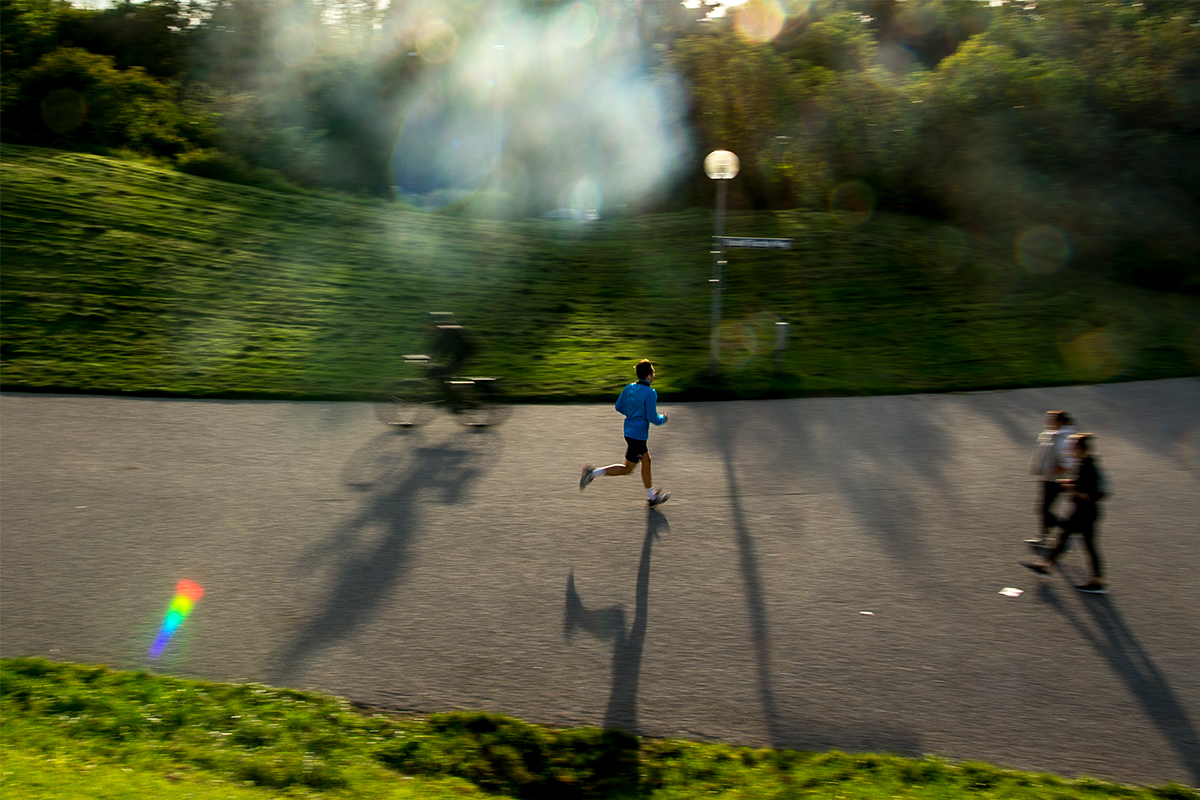
Your wrist knows all
A random assortment of 2021 fitness takeaways I know thanks to the data-collecting going on over at WHOOP:
- You may not have heard about a swimming or rucking boom, but those were the two most popular “new” activities sampled by WHOOP users
- No matter how short-changed you may have felt after “Hot Vax Summer” failed to live up to its billing, we actually did have more sex from May to August this year. That’s also when were at our least stressed (coincidence?).
- That said, those fun months wreaked havoc on sleep … sleep performance was at its worst in June and at its peak in January.
- Alcohol remains the ultimate enemy of wellness; on average, booze decreased “recovery” (a metric WHOOP uses to quantify how prepared the body is to perform the following day) by 9%.
WHOOP is just one of the many all-knowing gizmos people are now accustomed to wearing while working out, sleeping, making dinner, having sex and going about their day. These devices offer you a ton of information in the way of biometrics (everything from heart rate variability to blood oxygen levels to the amount of times you wake up a night), but they also provide a bevy amount of fascinating information to their manufacturers.
Tabling the whole data-selling debate for the moment (for what it’s worth, WHOOP doesn’t do it — one reason the membership isn’t cheap), it’s compelling that hardware meant to help you understand your own fitness can also paint a compelling picture of how a global community approached fitness throughout a year. The sleep quality stat is particularly telling. I, for one, remember one of the very few positives from last winter being a ton of shuteye. It was dark and cold, any sort of commute was still far away, nightlife was nonexistent. There was no reason not to go to bed early.
The rollercoaster of a year is genuinely reflected in the figures catalogued by our wrists. There’s an important lesson in there. Take note of how a month’s events are impacting your mental and physical health, no matter how big or small they may seem as they arrive. Turn to your wearable in these moments. Nearly 60 million Americans wear one every day, and demand has gone up 10% since last year. Learn how to read the numbers they crunch for you every morning, and if you must compare those numbers to those of other people, try not to compare yourself to your weekend warrior friend. Just wait for the end-of-year reports to see how you fit into the population at large.
Workday cheekiness
Longevity researchers are obsessed with how little time we need to spend working out to maximize our chances of living longer. The craziest study I saw this year: just four seconds of intense exercise each day can boost fitness. Most of the research, though, nets out somewhere around 15 minutes. If you can go hard for a quarter of an hour — whether on the bike, or in a bodyweight workout, whatever — it absolutely counts.
Kristie Alicea, a personal trainer and co-founder of ABC Fit Collective, thinks the approachable length of at-home workouts is their biggest draw. “Condensed HIIT workouts are perfect for WFH. You just squeeze them in during lunch time or a lull in your work day. No one feels like they need an hour or so for their workouts anymore. You used to need to account for commuting to the gym, your workout and your shower. Now my clients get their exercise in and hop right into a meeting without missing a beat. It’s convenient and efficient.”
HIIT was very much on the minds of trainers before the pandemic, but its rise has coalesced nicely with a widespread affinity for workday workouts. It’s unsurprising that adults would do their damndest to keep up this routine, especially when you consider the old alternative: sitting in an office for eight or more hours straight, broken up only by walks to the bathroom or lunch. Creativity suffers when one’s blood sits stagnant all day in an office chair; on the other hand, getting up and distracting yourself from the all-important task at hand is often the exact thing you need to solve said task. Not to mention that it’s energizing, rewarding and a good M.O. for living to 100 one day.
It’s not just quick-hitters at home, though. Working from home has also given employees more flexibility in figuring out when they can leave the house and hit the gym. According to research from ClassPass, over “70% of professionals are dropping by fitness studios on the days they are remote.” Plus, “people are twice as likely to discover and sample a new fitness class or studio they have never visited on the days they work from home.” In other words: it feels fair to contend that the “event” nature of an office workday has always held personal workout routines back. Oh, and, one other WFH trend to keep an eye on? Strategic napping. We profiled the strange, and extremely 2021 trend, here.
Greetings from the metaverse
“Rock the boat.” Fingertip push-ups. “Thrusting dance workouts.” TikTok’s brand of fitness mostly boils down to dubious flash-in-the-pan challenges. But while it’s tempting to dismiss them entirely, they get millions of views and thousands of attempts, some of which end in injury. Wellness generally subsists on planning and purpose, but this is one odd arena where it collides with boredom and spontaneity. Kids bring the same “I’ll try anything once” energy they reserve for everything else viral to completing a single, very specific task that’s tangentially related to fitness.
This is part of fitness’s digitized future. Virality will always play a role, and trainers (learning on the fly how to appeal to an online audience) will most definitely look to take advantage of that fact. The competition for eyeballs is only just beginning; our fitness lives are already more online than we may care to admit — think about the rise of ever-updating training apps — and they may be about to get extremely online.
“Multisport VR fitness” is coming, whether we like it or not. Mark Zuckerberg has spoken openly about his desire for a world where people can put on headsets and “do a boxing class with an instructor or a dance class … in this amazing environment.” Meta, Facebook’s virtual reality platform, acquired a company called Within for $400 million earlier this year. Within created a VR fitness app called Supernatural, which is at the forefront of an oft-stated industry goal: turn workouts into vacations.
These all feel like indiscernible rumblings right now: What’s the metaverse? How does it relate to NFTs? What the hell does it have to do with my Tuesday night spin class? But the reality is that the more we’ve exhibited a willingness to mix our love of fitness with our online lives, the more the missions of these companies appear justified in board rooms. Make no mistake, the metaverse was coming for us all regardless. But after a year like 2021, its intersection with wellness is all but guaranteed.
It’s a lot to ponder. I’ve got nothing against the AI instructors in Zuckerland. But it’s been a long year. And if there’s one takeaway that holds true — no matter how batshit a year may be — it’s the day-defining power of a good old-fashioned sweat. As 2021 crawls to a close, suspended in uncertainty, I find myself yearning for the familiar: a half hour at my gym down the road, with a pair of dumbbells and an oversized mirror.
The Charge will help you move better, think clearer and stay in the game longer. Subscribe to our wellness newsletter today.
